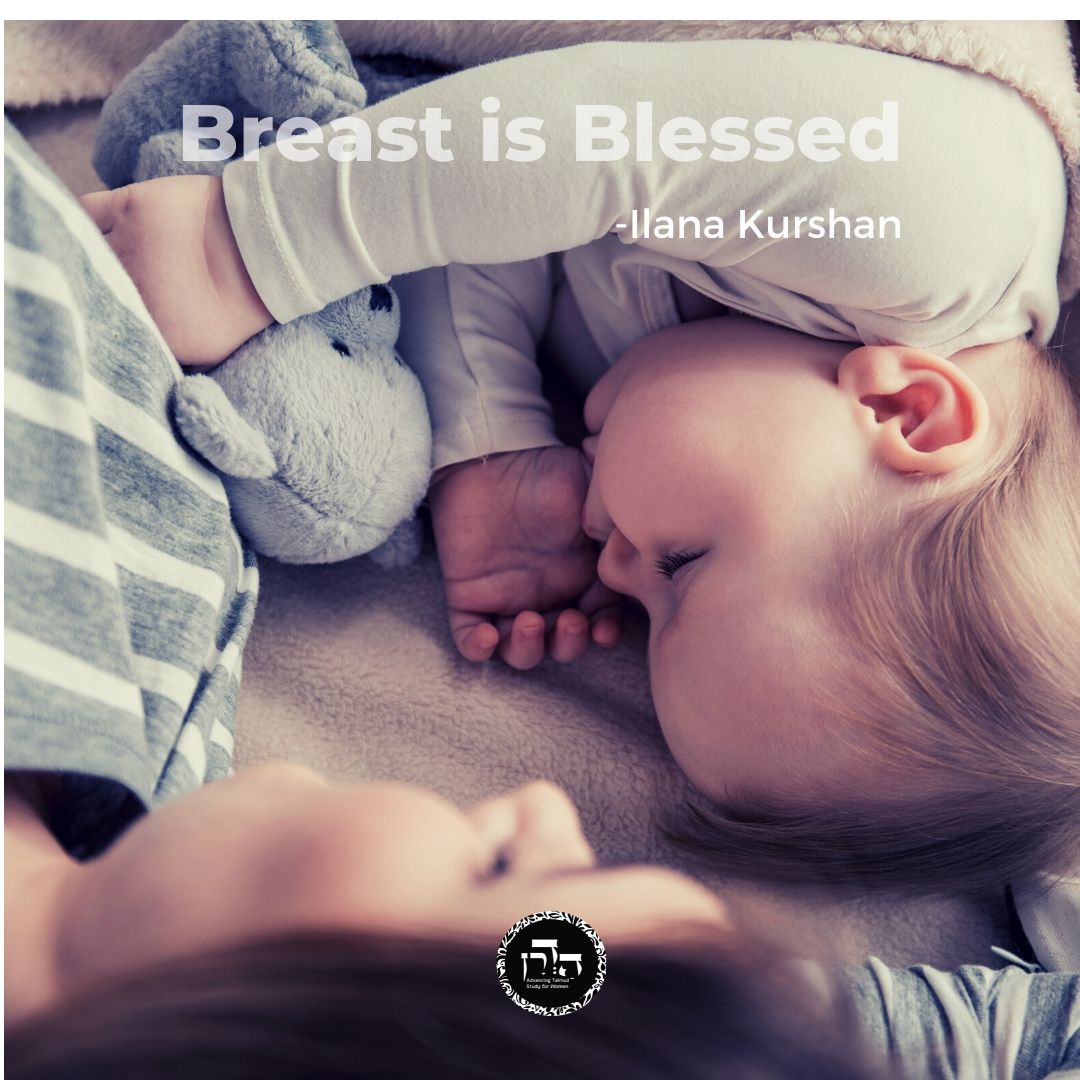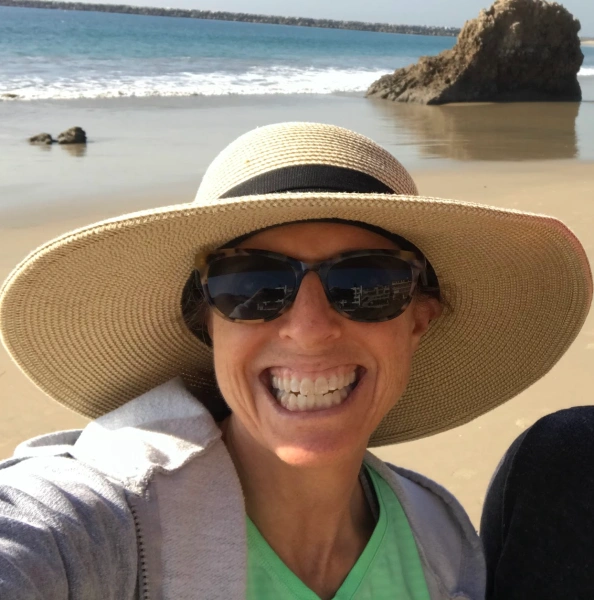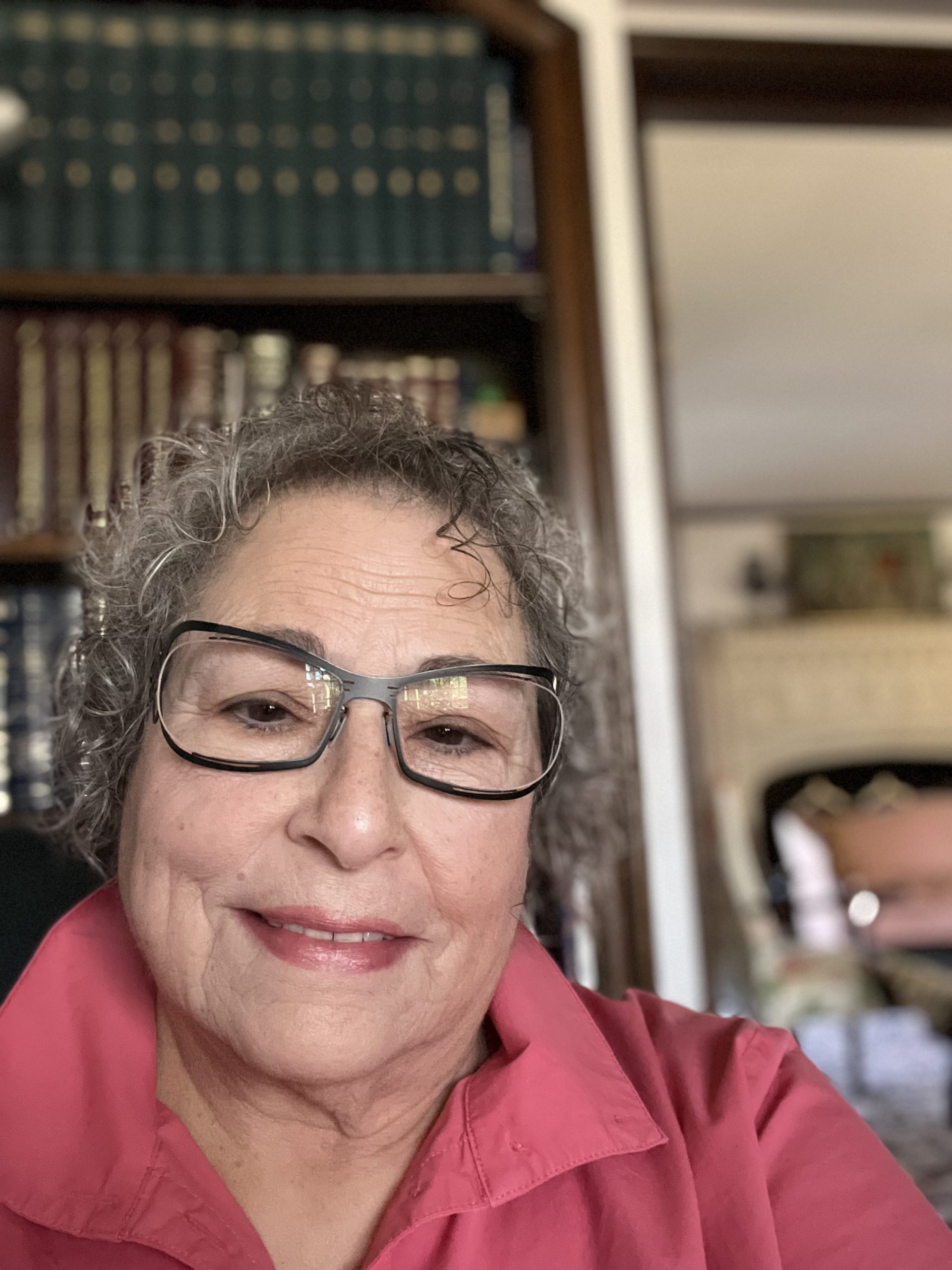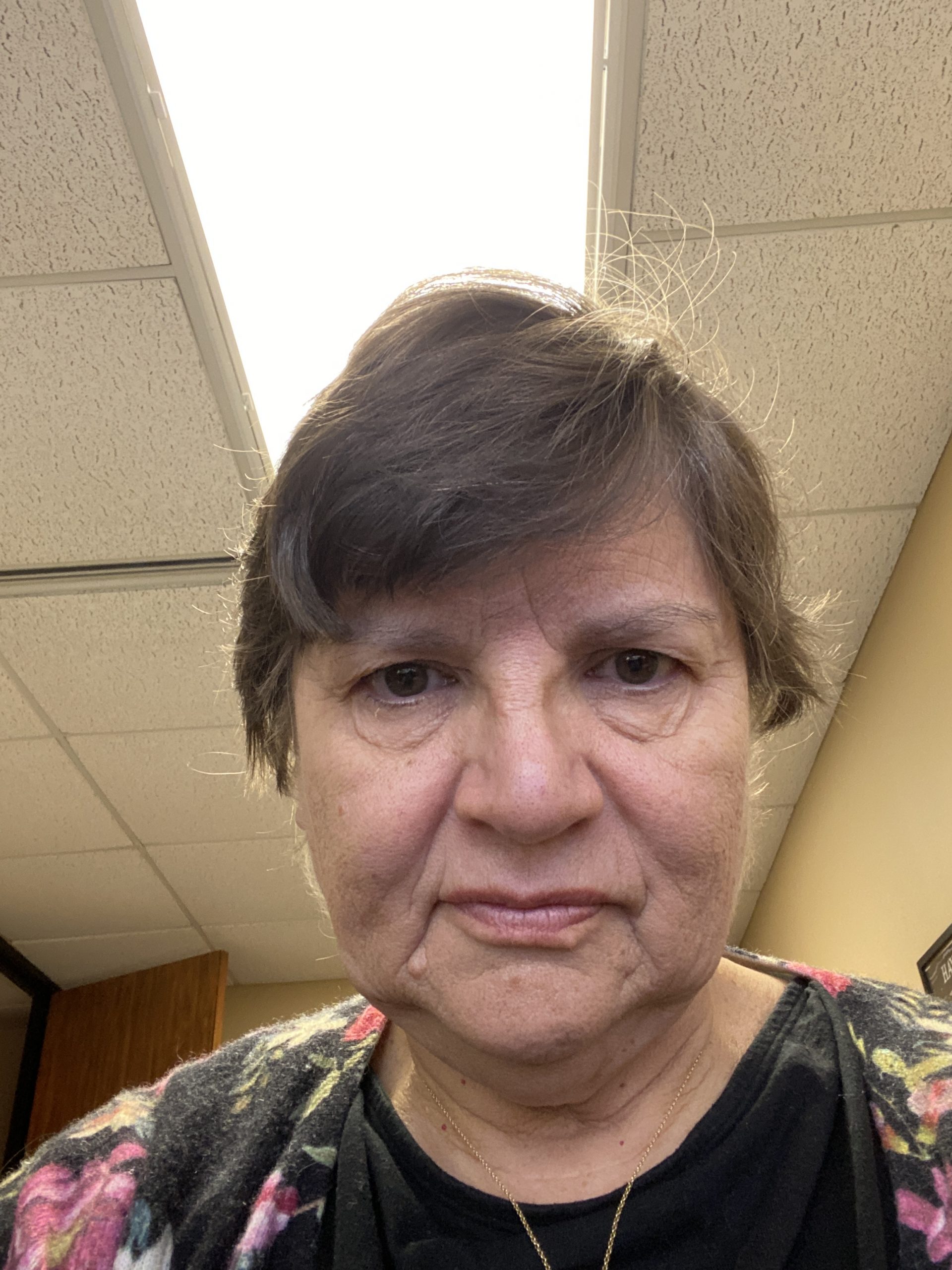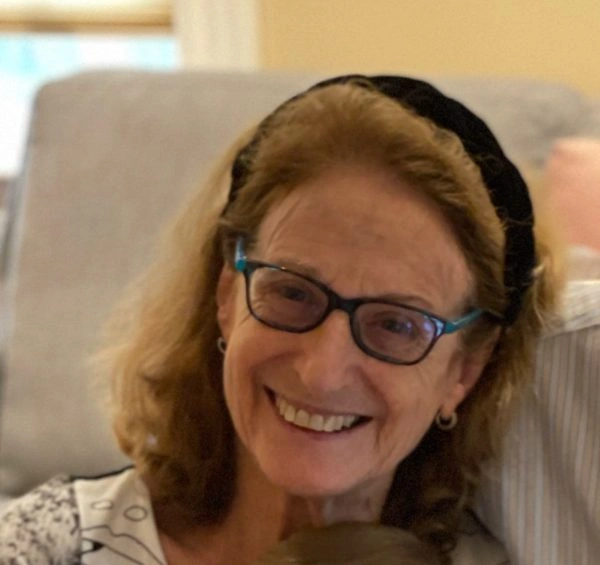In writing a sefer torah, if a mem which is used in the middle of a word can function as a mem at the end of a word, would the same hold true in the reverse case? Historically, did one precede the other? The gemara brings a drasha on the meaning of all the letters in the Hebrew alphabet and also regarding the direction and shapes of the letters. Drashot are also brought using codes like Aleph-Tav, Bet-Shin and others. In what ways and with what types of ink is one obligated to bring a sin offering if one wrote on Shabbat and in what ways is one exempt from a sin offering (but obligated by rabbinic law). Is one obligated if one wrote over letters already written or added one letter to a letter that was already written and formed a word or wrote two letters nowhere near each other? What if one wrote on one’s body? Or scratches letters on his body? A story is told of Ben Setada who etched secret magic spells on his flesh to be able to sneak it out of Egypt. There is a section about him that was removed by the censor. Was it referring to Jesus? If one wrote the last letter of a book, is that forbidden by Torah law? What if one wrote one letter in two different cities (one letter in each city)?
Want to dedicate learning? Get started here:


Today’s daily daf tools:
Today’s daily daf tools:
Delve Deeper
Broaden your understanding of the topics on this daf with classes and podcasts from top women Talmud scholars.
New to Talmud?
Check out our resources designed to help you navigate a page of Talmud – and study at the pace, level and style that fits you.
The Hadran Women’s Tapestry
Meet the diverse women learning Gemara at Hadran and hear their stories.
Shabbat 104
עַלּוֹיֵי קָא מְעַלֵּי לֵיהּ, דְּאָמַר רַב חִסְדָּא: מֵ״ם וְסָמֶ״ךְ שֶׁבַּלּוּחוֹת בְּנֵס הָיוּ עוֹמְדִין. אֶלָּא סָתוּם וַעֲשָׂאוֹ פָּתוּחַ — גָּרוֹעֵי קָא מְגָרַע לֵיהּ, דְּאָמַר רַבִּי יִרְמְיָה, וְאִיתֵּימָא רַבִּי חִיָּיא בַּר אַבָּא: מַנְצְפַךְ צוֹפִים אֲמָרוּם.
he elevates its status, as Rav Ḥisda said: The letters mem and samekh that were in the tablets were standing miraculously. Each letter was chiseled all the way through the tablets. In that case, the segment of the tablets at the center of the samekh and final mem, letters that are completely closed, should have fallen. Miraculously, they remained in place. Consequently, rendering an open mem closed elevates its status. However, if one rendered a closed letter open, he diminishes its status, as Rabbi Yirmeya said, and some say that it was Rabbi Ḥiyya bar Abba who said: The prophets instituted the difference between the open and closed forms of the letters mem, nun, tzadi, peh, kaf. Since the closed letters date back to the Ten Commandments, apparently the prophets introduced the open versions of the letters, which are therefore less significant.
וְתִיסְבְּרָא?! וְהָכְתִיב: ״אֵלֶּה הַמִּצְוֹת״ — שֶׁאֵין הַנָּבִיא רַשַּׁאי לְחַדֵּשׁ דָּבָר מֵעַתָּה! אֶלָּא מִיהְוָה הֲוַאי, מִידָּע לָא הֲוָה יָדְעִין הֵי בְּאֶמְצַע תֵּיבָה הֵי בְּסוֹף תֵּיבָה, וַאֲתוֹ צוֹפִים תַּקְּנִינְהוּ. וְאַכַּתִּי ״אֵלֶּה הַמִּצְוֹת״ — שֶׁאֵין הַנָּבִיא רַשַּׁאי לְחַדֵּשׁ דָּבָר מֵעַתָּה! אֶלָּא, שְׁכָחוּם וְחָזְרוּ וְיִסְּדוּם.
The Gemara rejects this: And is that reasonable? Isn’t it written: “These are the commandments that the Lord commanded Moses to tell the children of Israel at Mount Sinai” (Leviticus 27:34). The word “these” underscores that a prophet is not permitted to introduce any new element related to the Torah and its mitzvot from here on. Rather, the prophets did not innovate these forms. Both the open and closed versions existed before then. However, people did not know which form appeared in the middle of a word and which form at the end of a word. And the prophets came and instituted their set positions. The Gemara asks: And still the question remains: Didn’t the Sages derive from the verse: “These are the commandments,” that a prophet is not permitted to introduce any new element from here on? How could they institute the position of the letters? Rather, over the course of time, the people forgot their positions in the words and the prophets then reestablished their positions. Apparently, closed letters are no more significant than the open ones.
גּוּפָא, אָמַר רַב חִסְדָּא: מֵ״ם וְסָמֶ״ךְ שֶׁבַּלּוּחוֹת בְּנֵס הָיוּ עוֹמְדִין. וְאָמַר רַב חִסְדָּא: כְּתָב שֶׁבַּלּוּחוֹת נִקְרָא מִבִּפְנִים וְנִקְרָא מִבַּחוּץ, כְּגוֹן: ״נְבוּב״ — ״בובן״, ״רַהַב״ — ״בָּהָר״, ״סָרוּ״ — ״ורס״.
The Gemara returns to discuss the matter itself. Rav Ḥisda said: The letters mem and samekh that were in the tablets were standing miraculously. And furthermore, Rav Ḥisda said: The writing on the tablets was read from the inside, from one side of the tablets, and read from the outside, the other side of the tablets, in reverse order. The Gemara cites words that appear elsewhere in the Bible: Nevuv was read as bet, vav, bet, nun; rahav as beit, heh, reish; and saru as vav, reish, samekh.
אָמְרִי לֵיהּ רַבָּנַן לְרַבִּי יְהוֹשֻׁעַ בֶּן לֵוִי: אֲתוֹ דַּרְדְּקֵי הָאִידָּנָא לְבֵי מִדְרְשָׁא וַאֲמַרוּ מִילֵּי דַּאֲפִילּוּ בִּימֵי יְהוֹשֻׁעַ בִּן נוּן לָא אִיתְּמַר כְּווֹתַיְיהוּ: אָלֶ״ף בֵּי״ת — אֲלַף בִּינָה. גִּימֶ״ל דָּלֶ״ת — גְּמוֹל דַּלִּים. מַאי טַעְמָא פְּשׁוּטָה כַּרְעֵיהּ דְּגִימֶ״ל לְגַבֵּי דָּלֶ״ת — שֶׁכֵּן דַּרְכּוֹ שֶׁל גּוֹמֵל חֲסָדִים לָרוּץ אַחַר דַּלִּים. וּמַאי טַעְמָא פְּשׁוּטָה כַּרְעֵיהּ דְּדָלֶ״ת לְגַבַּי גִּימֶ״ל — דְּלַימְצְיַהּ לֵיהּ נַפְשֵׁיהּ. וּמַאי טַעְמָא מְהַדַּר אַפֵּיהּ דְּדָלֶ״ת מִגִּימֶ״ל — דְּלִיתֵּן לֵיהּ בְּצִינְעָה, כִּי הֵיכִי דְּלָא לִיכְּסִיף מִינֵּיהּ.
The Sages said to Rabbi Yehoshua ben Levi: Young students came today to the study hall and said things the likes of which were not said even in the days of Joshua bin Nun. These children who only knew the Hebrew alphabet interpreted the letters homiletically.
Alef beit means learn [elaf] the wisdom [bina] of the Torah.
Gimmel dalet means give to the poor [gemol dalim]. Why is the leg of the gimmel extended toward the dalet? Because it is the manner of one who bestows loving-kindness to pursue the poor. And why is the leg of the dalet extended toward the gimmel? It is so that a poor person will make himself available to him who wants to give him charity. And why does the dalet face away from the gimmel? It is to teach that one should give charity discreetly so that the poor person will not be embarrassed by him.
ה״ו — זֶה שְׁמוֹ שֶׁל הַקָּדוֹשׁ בָּרוּךְ הוּא. ז״ח ט״י כ״ל — וְאִם אַתָּה עוֹשֶׂה כֵּן, הַקָּדוֹשׁ בָּרוּךְ הוּא זָן אוֹתְךָ, וְחָן אוֹתְךָ, וּמֵטִיב לְךָ, וְנוֹתֵן לְךָ יְרוּשָּׁה, וְקוֹשֵׁר לְךָ כֶּתֶר לָעוֹלָם הַבָּא. מֵ״ם פְּתוּחָה, מֵ״ם סְתוּמָה — מַאֲמָר פָּתוּחַ, מַאֲמָר סָתוּם. נוּ״ן כְּפוּפָה, נוּ״ן פְּשׁוּטָה — נֶאֱמָן כָּפוּף, נֶאֱמָן פָּשׁוּט.
The children continued to interpret the letters.
Heh vav: That is the principal name of the Holy One, Blessed be He.
Zayin ḥet, tet yod, kaf lamed: And if you do so, the Holy One, Blessed be He, feeds [zan] you, and shows you favor [ḥan], and bestows goodness [meitiv] upon you, and gives you an inheritance [yerusha], and ties a crown [keter] for you in the World to Come [la’olam haba].
The open mem and closed mem indicate that the Torah contains an open statement, understood by all, and an esoteric statement.
The bent nun and the straight nun at the end of a word refer to a faithful person who is bent [ne’eman kafuf] and is modest now, who will ultimately become a well-known faithful person [ne’eman pashut].
ס״ע — סְמוֹךְ עֲנִיִּים. לִישָּׁנָא אַחֲרִינָא: סִימָנִין עֲשֵׂה בַּתּוֹרָה וּקְנֵה אוֹתָהּ. פ׳ כְּפוּפָה, פ׳ פְּשׁוּטָה — פֶּה פָּתוּחַ, פֶּה סָתוּם. צָדִ״י כְּפוּפָה וְצָדִ״י פְּשׁוּטָה — צַדִּיק כָּפוּף, צַדִּיק פָּשׁוּט. הַיְינוּ: נֶאֱמָן כָּפוּף, נֶאֱמָן פָּשׁוּט! הוֹסִיף לְךָ הַכָּתוּב כְּפִיפָה עַל כְּפִיפָתוֹ, מִכָּאן שֶׁנִּתְּנָה הַתּוֹרָה בִּמְנוֹד רֹאשׁ.
Samekh ayin: Support the poor [semokh aniyyim] to prevent them from falling further. Another version: Make mnemonic signs [simanim aseh] to remember the Torah and acquire it.
The bent peh and the straight peh: Sometimes one needs to have an open mouth [peh patuaḥ] and speak, and sometimes one needs to have a closed mouth [peh satum].
The bent tzadi and the straight tzadi indicate that a righteous person who is bent and humble [tzaddik kafuf] now will ultimately become a well-known righteous person [tzaddik pashut] whose righteousness is apparent to all. The Gemara asks: That is identical to the interpretation of the bent and straight nun: Ne’eman kafuf, ne’eman pashut. The Gemara explains: The verse added the bending of the righteous person to the bending of the faithful person. From here it is derived that the Torah was given in an atmosphere of gravity. One must receive the Torah with a sense of awe and extreme humility.
קוּ״ף — קָדוֹשׁ. רֵי״שׁ — רָשָׁע. מַאי טַעְמָא מְהַדַּר אַפֵּיהּ דְּקוּ״ף מֵרֵי״שׁ — אָמַר הַקָּדוֹשׁ בָּרוּךְ הוּא: אֵין אֲנִי יָכוֹל לְהִסְתַּכֵּל בָּרָשָׁע. וּמַאי טַעְמָא מְהַדַּר תָּגֵיהּ דְּקוּ״ף לְגַבֵּי רֵי״שׁ — אָמַר הַקָּדוֹשׁ בָּרוּךְ הוּא: אִם חוֹזֵר בּוֹ אֲנִי קוֹשֵׁר לוֹ כֶּתֶר כְּמוֹתִי. וּמַאי טַעְמָא כַּרְעֵיהּ דְּקוּ״ף תַּלְיָא — דְּאִי הָדַר בֵּיהּ, לִיעַיֵּיל.
The children continued:
Kuf: Holy [kadosh], referring to God.
Reish: A wicked person [rasha]. Why is the kuf facing away from the reish? This question was phrased euphemistically, as it is the reish that is facing away from the kuf. The Holy One, Blessed be He, said: I am unable look at a wicked person, i.e., the wicked person does not want to look toward God. And why is the crown of the letter kuf turned toward the reish? The Holy One, Blessed be He, said: If the wicked person repents his evil ways I will tie a crown for him like My own. And why is the leg of the kuf suspended and not connected to the roof of the letter? Because if the wicked person repents he can enter through this opening if he so desires.
וְלֵיעוּל בְּהָךְ! מְסַיַּיע לֵיהּ לְרֵישׁ לָקִישׁ, דְּאָמַר רֵישׁ לָקִישׁ: מַאי דִּכְתִיב ״אִם לַלֵּצִים הוּא יָלִיץ וְלַעֲנָוִים יִתֶּן חֵן״? בָּא לִיטַמֵּא — פּוֹתְחִין לוֹ, בָּא לִיטָּהֵר — מְסַיְּיעִים אוֹתוֹ.
The Gemara asks: Let him enter through that opening, as the kuf is open on both sides at the bottom. The Gemara answers: This supports the statement of Reish Lakish, as Reish Lakish said: What is the meaning of that which is written: “If it concerns the scorners, He scorns them, and unto the humble He gives grace” (Proverbs 3:34)? One who comes in order to become impure, i.e., to sin, they, in Heaven, provide him with an opening to do so, and he is not prevented from sinning. However, if he comes in order to become purified, not only is he allowed to do so, but they, in Heaven, assist him.
שִׁי״ן — שֶׁקֶר. תָּי״ו — אֱמֶת. מַאי טַעְמָא שֶׁקֶר מְקָרְבָן מִילֵּיהּ, אֱמֶת מְרַחֲקָא מִילֵּיהּ? — שִׁיקְרָא שְׁכִיחַ, קוּשְׁטָא לָא שְׁכִיחַ. וּמַאי טַעְמָא שִׁיקְרָא אַחֲדָא כַּרְעֵיהּ קָאֵי, וֶאֱמֶת מְלַבַּן לַבּוֹנֵי — קוּשְׁטָא קָאֵי, שִׁיקְרָא לָא קָאֵי.
They further taught:
Shin: Falsehood [sheker]. Tav: Truth [emet].
Why are the letters of the word sheker adjacent to one another in the alphabet, while the letters of emet are distant from one another? That is because while falsehood is easily found, truth is found only with great difficulty. And why do the letters that comprise the word sheker all stand on one foot, and the letters that comprise the word emet stand on bases that are wide like bricks? Because the truth stands eternal and falsehood does not stand eternal.
א״ת ב״ש: — אוֹתִי תִּעֵב אֶתְאַוֶּה לוֹ ב״ש בִּי לֹא חָשַׁק, שְׁמִי יָחוּל עָלָיו? ג״ר — גּוּפוֹ טִימֵּא, אֲרַחֵם עָלָיו ד״ק דַּלְתוֹתַי נָעַל, קַרְנָיו לֹא אֲגַדֵּעַ? עַד כָּאן מִדַּת רְשָׁעִים,
The Gemara cites another midrash that also deals with the letters of the alphabet. This one uses a code in which the first letter is paired with the last letter, the second letter with the penultimate one, and so on [alef tav, beit shin]. Alef tav, God said: If he despised Me [oti ti’ev] would I desire [etaveh] him? Beit shin: If he does not desire to worship Me [bi], shall My name [shemi] rest upon him? Gimmel reish: He defiled his body [gufo]; shall I have mercy [araḥem] on him? The word comprised of the letters gimmel and reish in Aramaic means licentiousness. Dalet kuf: He locked My doors [daltotai], shall I not cut off his horns [karnav]? To this point, the Gemara interpreted the letters as referring to the attribute of the wicked.
אֲבָל מִדַּת צַדִּיקִים: א״ת ב״ש — אִם אַתָּה בּוֹשׁ. ג״ר ד״ק — אִם אַתָּה עוֹשֶׂה כֵּן, גּוּר בְּדוֹק. ה״ץ ו״ף — חֲצִיצָה הָוֵי בֵּינְךָ לָאַף. ז״ע ח״ס ט״ן — וְאֵין אַתָּה מִזְדַּעְזֵעַ מִן הַשָּׂטָן. י״ם כ״ל — אָמַר [שַׂר שֶׁל] גֵּיהִנָּם לִפְנֵי הַקָּדוֹשׁ בָּרוּךְ הוּא: רִבּוֹנוֹ שֶׁל עוֹלָם, לַיָּם כֹּל.
However, with regard to the attribute of the righteous it is taught differently. Alef tav, beit shin: If you have shame [ata bosh], gimmel reish, dalet kuf: If you do so, you will reside [gur] in the heavens [bedok], as the verse says: “Who stretches out the Heavens like a curtain [dok]” (Isaiah 40:22). Heh tzadi, vav peh: There is a partition [ḥatzitza havei] between you and anger [af]. Zayin ayin, ḥet samekh, tet nun: And you will not be shaken [mizdaze’a] by the Satan. Yod mem, kaf lamed: The minister of Gehenna said before the Holy One, Blessed be He: Master of the Universe, send the righteous as well into the sea to which all go [yam kol], Gehenna.
אָמַר הַקָּדוֹשׁ בָּרוּךְ הוּא: אח״ס בט״ע גי״ף — אֲנִי חָס עֲלֵיהֶם מִפְּנֵי שֶׁבָּעֲטוּ בְּגִיף: דכ״ץ — דַּכִּים הֵם, כֵּנִים הֵם, צַדִּיקִים הֵם. הל״ק — אֵין לְךָ חֵלֶק בָּהֶן. ומרז״ן ש״ת — אָמַר גֵּיהִנָּם לְפָנָיו: רִבּוֹנוֹ שֶׁל עוֹלָם, מָרִי, זֻנֵינִי מִזַּרְעוֹ שֶׁל שֵׁת.
The interpretation of the alphabet continues with other combinations of letters. The Holy One, Blessed be He, said: Alef ḥet samekh, bet tet ayin, gimmel yod peh: I have mercy on them [Ani ḥas aleihem] because they spurned [ba’atu] adultery [gif]. The Gemara continues with this combination of the letters: Dalet kaf tzadi: They are pure [dakkim], they are honest [kenim], they are righteous [tzaddikim]. Heh lamed kuf: You have no portion [ḥelek] with them, based on the interchange of the letters ḥet and heh. Vav mem reish zayin nun, shin tav: The minister of Gehenna said [amar], based on vav mem reish, before Him: Master of the Universe, my Master [Mari], sustain me [zaneini] with the seed of Seth [Shet], which refers to all humankind, including the Jewish people.
אָמַר לוֹ: א״ל ב״ם ג״ן ד״ס — לְהֵיכָן אוֹלִיכֵן, לְגַן הֲדַס. ה״ע ו״ף — אָמַר גֵּיהִנָּם לִפְנֵי הַקָּדוֹשׁ בָּרוּךְ הוּא: רִבּוֹנוֹ שֶׁל עוֹלָם, עָיֵף אָנֹכִי. ז״ץ ח״ק — הַלָּלוּ זַרְעוֹ שֶׁל יִצְחָק. ט״ר י״ש כ״ת — טֹר יֵשׁ לִי כִּיתּוֹת כִּיתּוֹת שֶׁל אוּמּוֹת הָעוֹלָם שֶׁאֲנִי נוֹתֵן לְךָ.
The Holy One, Blessed be He, said to him using another configuration of the alphabet: Alef lamed, beit mem: Not with them [al bam], i.e., you will have no portion of them. Gimmel nun, dalet samekh: To where will I lead them? I will lead them to the garden of myrtle [gan hadas], i.e., the Garden of Eden. Heh ayin, vav peh: The minister of Gehenna said before the Holy One, Blessed be He: Master of the Universe, I am tired [ayef anokhi] and thirsty and need people to care for me. The Holy One, Blessed be He, responded: Zayin tzadi, ḥet kuf: These are the descendants [zaro] of Isaac [Yitzḥak]. Tet reish, yod shin, kaf tav: Wait [tar], I have groups upon groups [yesh li kittot kittot] of other nations that I will give you instead.
מַתְנִי׳ הַכּוֹתֵב שְׁתֵּי אוֹתִיּוֹת בְּהֶעְלֵם אֶחָד — חַיָּיב. כָּתַב בִּדְיוֹ בְּסַם בְּסִיקְרָא בְּקוֹמוֹס וּבְקַנְקַנְתּוֹם וּבְכׇל דָּבָר שֶׁהוּא רוֹשֵׁם. עַל שְׁנֵי כּוֹתְלֵי זָוִיּוֹת וְעַל שְׁנֵי לוּחֵי פִינְקָס וְהֵן נֶהֱגִין זֶה עִם זֶה — חַיָּיב. הַכּוֹתֵב עַל בְּשָׂרוֹ — חַיָּיב. הַמְסָרֵט עַל בְּשָׂרוֹ — רַבִּי אֱלִיעֶזֶר מְחַיֵּיב חַטָּאת וַחֲכָמִים פּוֹטְרִין.
MISHNA: One who writes two letters on Shabbat during one lapse of awareness is liable. The following substances used as ink are explained in the Gemara. One is liable if he wrote with deyo, with sam, with sikra, with gum [komos], or with copper sulfate [kankantom] or with any substance that makes a mark. If one wrote on two walls of a house that form a corner, or on two parts of a writing tablet, and the two items are read together, he is liable. One who writes on his flesh on Shabbat is liable. If one unwittingly scratches letters on his flesh on Shabbat, Rabbi Eliezer deems him liable to bring a sin-offering and the Sages deem him exempt.
כָּתַב בְּמַשְׁקִין בְּמֵי פֵּירוֹת, בַּאֲבַק דְּרָכִים בַּאֲבַק הַסּוֹפְרִים וּבְכׇל דָּבָר שֶׁאֵינוֹ מִתְקַיֵּים — פָּטוּר. לְאַחַר יָדוֹ בְּרַגְלוֹ בְּפִיו וּבְמַרְפְּקוֹ, כָּתַב אוֹת אַחַת סָמוּךְ לַכְּתָב, וּכְתָב עַל גַּבֵּי כְּתָב, נִתְכַּוֵּון לִכְתּוֹב חֵי״ת וְכָתַב שְׁתֵּי זַיְינִין, אַחַת בָּאָרֶץ וְאַחַת בַּקּוֹרָה, כָּתַב עַל שְׁנֵי כּוֹתְלֵי הַבַּיִת, עַל שְׁנֵי דַּפֵּי פִנְקָס וְאֵין נֶהֱגִין זֶה עִם זֶה — פָּטוּר. כָּתַב אוֹת אַחַת נוֹטָרִיקוֹן — רַבִּי יְהוֹשֻׁעַ בֶּן בְּתֵירָא מְחַיֵּיב וַחֲכָמִים פּוֹטְרִין.
If one wrote with liquids or with fruit juice, or if one drew letters with road dust, with scribes’ dust that they use to dry the ink, or with any substance with which the writing does not endure, he is exempt. Similarly, if one wrote by holding the pen on the back of his hand, with his foot, with his mouth, or with his elbow; if one wrote only a single letter, even if it was adjacent to other preexisting writing; or if one wrote over other writing; if one meant to write the letter ḥet and instead wrote the two halves of the ḥet as two instances of the letter zayin; if one wrote one letter on the ground and one on a rafter; if one wrote one letter on two walls of a house, or on two parts of a writing tablet that are not read together, he is exempt. If one wrote one letter as an abbreviation representing an entire word, Rabbi Yehoshua ben Beteira deems him liable to bring a sin-offering, and the Rabbis deem him exempt.
גְּמָ׳ דְּיוֹ — דְּיוֹתָא. סַם — סַמָּא. סִקְרָא — אָמַר רַבָּה בַּר בַּר חָנָה: סְקַרְתָּא שְׁמָהּ. קוֹמוֹס — קוֹמָא. קַנְקַנְתּוֹם — אָמַר רַבָּה בַּר בַּר חָנָה אָמַר שְׁמוּאֵל: חַרְתָּא דְאוּשְׁכָּפֵי.
GEMARA: The Gemara defines the terms used in the mishna. Deyo is deyota made from soot. Sam is samma, which is yellow-tinged arsenic. Sikra, Rabba bar bar Ḥana said: It is called sikreta in Aramaic and is a lead-based red paint. Komos is koma in Aramaic, and it is an ink made with gum Arabic from the sap of a tree. Kankantom, Rabba bar bar Ḥana said that Shmuel said: This is the black substance used by cobblers, copper sulfate.
וּבְכׇל דָּבָר שֶׁהוּא רוֹשֵׁם. לְאֵתוֹיֵי מַאי? לְאֵתוֹיֵי הָא דְתָנֵי רַבִּי חֲנַנְיָא: כְּתָבוֹ בְּמֵי טַרְיָא וְאַפְצָא — כָּשֵׁר. תָּנֵי רַבִּי חִיָּיא: כְּתָבוֹ בַּאֲבָר בִּשְׁחוֹר וּבְשִׁיחוֹר — כָּשֵׁר.
And we learned in the mishna that one who writes with any substance that makes a mark is liable. The Gemara asks: What does this statement come to include? The Gemara answers: It comes to include that which Rabbi Ḥananya taught with regard to writing a bill of divorce: If one wrote it with the juice of the fruit called teriya, or with gallnut juice instead of ink, it is valid. Similarly, Rabbi Ḥiyya taught: If one wrote a bill of divorce with lead, with soot (ge’onim), or with shoeblack, it is valid. Since those substances leave a permanent mark, one who writes with them on Shabbat is liable.
הַמְסָרֵט עַל בְּשָׂרוֹ. תַּנְיָא, אָמַר לָהֶן רַבִּי אֱלִיעֶזֶר לַחֲכָמִים: וַהֲלֹא בֶּן סָטָדָא הוֹצִיא כְּשָׁפִים מִמִּצְרַיִם בִּסְרִיטָה שֶׁעַל בְּשָׂרוֹ? אָמְרוּ לוֹ: שׁוֹטֶה הָיָה, וְאֵין מְבִיאִין רְאָיָה מִן הַשּׁוֹטִים. ״בֶּן סָטָדָא״? בֶּן פַּנְדִּירָא הוּא! אָמַר רַב חִסְדָּא: בַּעַל ״סָטָדָא״, בּוֹעֵל ״פַּנְדִּירָא״. בַּעַל פַּפּוּס בֶּן יְהוּדָה הוּא? אֶלָּא אִמּוֹ ״סָטָדָא״. אִמּוֹ מִרְיָם מְגַדְּלָא שְׂעַר נְשַׁיָּא הֲוַאי? אֶלָּא כִּדְאָמְרִי בְּפוּמְבְּדִיתָא: סְטָת דָּא מִבַּעְלַהּ.
We learned in the mishna: If one unwittingly scratches letters on his flesh on Shabbat, Rabbi Eliezer deems him liable to bring a sin-offering and the Sages deem him exempt. It was taught in a baraita that Rabbi Eliezer said to the Rabbis: Didn’t the infamous ben Stada take magic spells out of Egypt in a scratch on his flesh? They said to him: He was a fool, and you cannot cite proof from a fool. That is not the way that most people write. Incidentally, the Gemara asks: Why did they call him ben Stada, when he was the son of Pandeira? Rav Ḥisda said: His mother’s husband, who acted as his father, was named Stada, but the one who had relations with his mother and fathered him was named Pandeira. The Gemara asks: Wasn’t his mother’s husband Pappos ben Yehuda? Rather, his mother was named Stada and he was named ben Stada after her. The Gemara asks: But wasn’t his mother Miriam, who braided women’s hair? The Gemara explains: That is not a contradiction. Rather, Stada was merely a nickname, as they say in Pumbedita: This one strayed [setat da] from her husband.
כָּתַב אוֹת אַחַת סָמוּךְ לַכְּתָב. מַאן תַּנָּא? אָמַר רָבָא בַּר רַב הוּנָא: דְּלָא כְּרַבִּי אֱלִיעֶזֶר, דְּאִי רַבִּי אֱלִיעֶזֶר, הָאָמַר: אַחַת עַל הָאָרִיג — חַיָּיב.
We learned in the mishna: If one wrote only a single letter, even if it was adjacent to other preexisting writing, he is exempt. The Gemara asks: Who is the tanna whose opinion is cited in the mishna? Rava bar Rav Huna said: This halakha is not in accordance with the opinion of Rabbi Eliezer, as if it were in accordance with the opinion of Rabbi Eliezer, didn’t he say: One who adds a single thread to a previously woven fabric is liable for weaving? In his opinion, although a single thread or letter is insignificant in and of itself, one is liable because adding even a small measure to existing material is significant.
כְּתָב עַל גַּבֵּי כְּתָב. מַאן תַּנָּא? אָמַר רַב חִסְדָּא: דְּלָא כְּרַבִּי יְהוּדָה. דְּתַנְיָא: הֲרֵי שֶׁהָיָה צָרִיךְ לִכְתּוֹב אֶת הַשֵּׁם, וְנִתְכַּוֵּין לִכְתּוֹב ״יְהוּדָה״, וְטָעָה וְלֹא הֵטִיל בּוֹ דָּלֶת — מַעֲבִיר עָלָיו קוּלְמוֹס וּמְקַדְּשׁוֹ, דִּבְרֵי רַבִּי יְהוּדָה. וַחֲכָמִים אוֹמְרִים: אֵין הַשֵּׁם מִן הַמּוּבְחָר.
We learned in the mishna: If one wrote over other writing he is exempt. The Gemara asks: Who is the tanna whose opinion is cited in the mishna? Rav Ḥisda said: This halakha is not in accordance with the opinion of Rabbi Yehuda, as it was taught in a baraita: If one needed to write the Tetragrammaton, the name of God, in a Torah scroll, and became confused and intended instead to write the name Yehuda, and while intending to write Yehuda he erred and omitted the letter dalet, thereby writing the name of God, he should do the following. He passes a quill with more ink over the name and sanctifies it, i.e., he writes it with the intention required when writing a holy name. This is the statement of Rabbi Yehuda. And the Rabbis say: Even if he adds ink over what he wrote, this writing of God’s name is not ideal. Apparently, according to Rabbi Yehuda, writing over other writing is considered writing anew.
תָּנָא: כָּתַב אוֹת אַחַת וְהִשְׁלִימָהּ לְסֵפֶר, אָרַג חוּט אֶחָד וְהִשְׁלִימוֹ לְבֶגֶד — חַיָּיב. מַאן תַּנָּא? אָמַר רָבָא בַּר רַב הוּנָא: רַבִּי אֱלִיעֶזֶר הִיא, דְּאָמַר אַחַת עַל הָאָרִיג — חַיָּיב. רַב אָשֵׁי אָמַר: אֲפִילּוּ תֵּימָא רַבָּנַן, לְהַשְׁלִים שָׁאנֵי.
A tanna taught in a baraita: If one wrote a single letter and thereby completed a book, or if one wove a single thread and thereby completed an entire garment, he is liable. The Gemara asks: Who is the tanna whose opinion is cited in the baraita? Rava bar Rav Huna said: It is the opinion of Rabbi Eliezer, who said: One who adds a single thread to a previously woven fabric is liable for weaving. Rav Ashi said: Even if you say that in accordance with the opinion of the Rabbis, one who does so to complete a garment is different. Even if he is not liable for weaving, he is liable at least for striking a blow with a hammer to complete the production process of a vessel.
אָמַר רַבִּי אַמֵּי: כָּתַב אוֹת אַחַת בִּטְבֶרְיָא וְאַחַת בְּצִיפּוֹרִי — חַיָּיב, כְּתִיבָה הִיא, אֶלָּא שֶׁמְחוּסָּר קְרִיבָה. וְהָתְנַן: כָּתַב עַל שְׁנֵי כּוֹתְלֵי הַבַּיִת וְעַל שְׁנֵי דַּפֵּי פִנְקָס וְאֵין נֶהֱגִין זֶה עִם זֶה — פָּטוּר! הָתָם מְחוּסָּר מַעֲשֶׂה דִקְרִיבָה, הָכָא לֹא מְחוּסָּר מַעֲשֶׂה דִקְרִיבָה.
Rabbi Ami said: If one wrote one letter on paper in Tiberias and one letter on paper in Tzippori, he is liable because he performed a full-fledged act of writing that is lacking only in proximity. When the two pieces of paper are brought together he will have written two associated letters. The Gemara asks: Didn’t we learn in the mishna: If one wrote one letter on two walls of a house, or on two parts of a writing tablet that are not read together, he is exempt? All the more so that this is the halakha with regard to one who wrote in two different cities. The Gemara answers: There, in the case of the parts of a tablet, there is the lack of an additional act of cutting or tearing to facilitate bringing the letters together. However, here, in the case of two cities, even though they are distant from one another, there is no lack of an additional act to facilitate bringing them together.
תָּנָא: הִגִּיהַּ אוֹת אַחַת — חַיָּיב. הַשְׁתָּא כָּתַב אוֹת אַחַת — פָּטוּר, הִגִּיהַּ אוֹת אַחַת חַיָּיב?! אָמַר רַב שֵׁשֶׁת: הָכָא בְּמַאי עָסְקִינַן — כְּגוֹן שֶׁנְּטָלוֹ לְגַגּוֹ שֶׁל חֵי״ת וַעֲשָׂאוֹ שְׁנֵי זַיְינִין. רָבָא אָמַר: כְּגוֹן שֶׁנְּטָלוֹ לְתָגוֹ שֶׁל דָּלֶ”ת וַעֲשָׂאוֹ רֵי״שׁ.
A tanna taught in the Tosefta: If one emended a single letter on Shabbat, he is liable. The Gemara wonders: Now, if one wrote a single letter on Shabbat he is exempt; is it possible that if one emends a single letter he is liable? Rav Sheshet said: With what are we dealing here? We are dealing with a case where one removed the roof of a ḥet and transformed it into two instances of the letter zayin, effectively writing two letters with a single correction. Rava said: It is not necessarily referring to that specific case. It could even be referring to a case where one removed the protrusion from the back of a dalet and transformed it into a reish, thereby emending the written text. One who did so is liable for performing the prohibited labor of striking a blow with a hammer to complete the production process of a vessel.
תָּנָא: נִתְכַּוֵּין לִכְתּוֹב אוֹת אַחַת
A tanna taught: If one intended to write one letter on Shabbat


